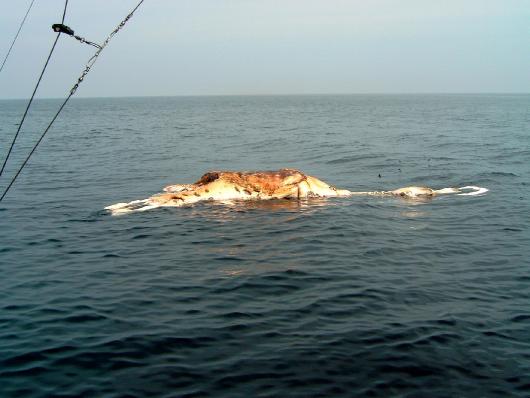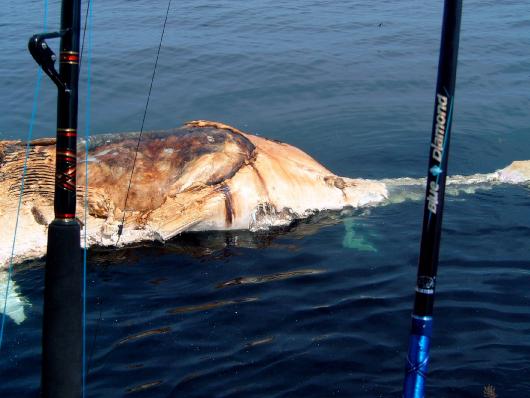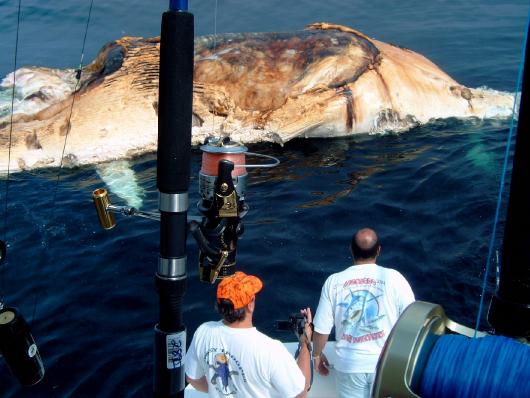 |
Welcome to the Reel Boating Forum.
From Trailer Boaters to Captains to Marine Industry Professionals, the Reel Boating Forum welcomes you to join in with other boaters and fishermen discussing topics including sportfishing, marine electronics, boating safety, boat engines and more. Use our FREE boat classifieds to sell your boat or fishing gear. Marine Industry Vendors are also welcome to register a username and freely post their products or services |

Fubar512
Registered-
Posts
99 -
Joined
-
Last visited
Content Type
Profiles
Forums
Events
Everything posted by Fubar512
-
The Whole Hull - with "Surface Effect"
Fubar512 replied to BigFishing's topic in Boating and Fishing Discussion
Pretty much what I suspected, as well. -
The Whole Hull - with "Surface Effect"
Fubar512 replied to BigFishing's topic in Boating and Fishing Discussion
If I understand this correctly, what you're proposing, is supercavitation. In concept, it's similar to the principle that allows the Russian Shkval torpedo to achieve an underwater speed of 200+ knots: http://en.wikipedia.org/wiki/VA-111_Shkval -
Chapter 2 - - - Making Offers on a Boat
Fubar512 replied to auguste's topic in Boating and Fishing Discussion
I wouldn't give him the time of day. If he approaches you again, agreeing to the last offer, tell him no, and offer him 15K LESS. -
Nice fish. I'm always amazed by their tendency to run virtually straight down right after hookup.
-
Crimping Plier Recomentation
Fubar512 replied to Bend-Lure's topic in Boating and Fishing Discussion
Braid HD pre-calibrated crimpers...prevents over or undercrimping. I recently picked one up for under $50, didn't realize what a deal I'd gotten, until I checked online: http://www.meltontackle.com/products/braid...ed-crimper.html -
Chapter 2 - - - Making Offers on a Boat
Fubar512 replied to auguste's topic in Boating and Fishing Discussion
A hint: It's white, it's an express, and it should fit nicely in Gus's 40' x 16' slip -
Unfotunately, there were no Mahi around this carcass (off of NJ), but check out the size of those shark bites!
-
Initial Purchase price vs Resale value
Fubar512 replied to breezy's topic in Boating and Fishing Discussion
Today's market is not resale-value friendly. Used boats are often selling for 50-60% of their BUC values. Back in the day, however, things were quite different. During the early 90's, a twenty year - old 31 Bert with gas engines usually sold for 35-40K. Not bad, when you consider that that same boat, listed for about 30K, when it was brand new (in the early 70s)! -
The last two vessels I owned had 15 and 25 gallon FW systems (respectively). Neither had gages to monitor tank levels. As a previous poster indicated, you'd be quite surprised as to how far even 15 gallons of freshwater goes.......as long as you don't flush your (freshwater) toilet 12 or 15 times per trip. The first boat, a Wellcraft 248 Sportsman, came from the factory equipped with a 15 gallon fresh water tank, just to feed a hand-pumped wash basin in the galley. I added an electric pump and an accumulator tank, and then ran a hose off a tee to the cockpit, adding a freshwater wash-down and cockpit shower. I felt as if I were living in the lap of luxury
-
Firstly, a bucket of frozen chum will not sink. It will float, albeit, just awash. Your best bet is to purchase a commercially produced, nylon chum bag. They're designed to hold an inverted 5-gallon bucket of chum, and can be suspended from a cleat, by a line attached to their drawstrings. The usual drill is to suspend the inverted bucket so as to keep the first few inches of it submerged. A 5-gallon bucket will last anywhere from 3-6 hours this way, depending on water temperature. When shark fishing, we usually submerge the entire mess, and even go as far as to poke holes in the bottom of the bucket, to hasten its thawing and to increase the flow of chum. You'll get about 2 hours out of bucket deployed in this manner. In the latter scenario, we'll make sure to 3-4 buckets of chum on hand.
-
Chapter 2 - - - Making Offers on a Boat
Fubar512 replied to auguste's topic in Boating and Fishing Discussion
He did not "steal" a boat that Gus was looking at. He simply went after one that Gus had already rejected. Personally, I think he got robbed, big time.... -
Chapter 2 - - - Making Offers on a Boat
Fubar512 replied to auguste's topic in Boating and Fishing Discussion
Stepping out on a limb here; based on "historical data", I anticipate that everything will go through, and that Gus will schedule a sea trial for next Wednesday. My source.... Forecast for Wednesday, Jun 10: Rain -
It depends on the latitude. For example, at the equator, 1 degree of longitude = 60.15 nm (or 69.172 statutes miles). The farther away you are from the equator, the closer the separation is between the lines of longitude. This of course, doesn't effect lines of latitude, where 1 degree is always 60.15 nm.
-
Chapter 2 - - - Making Offers on a Boat
Fubar512 replied to auguste's topic in Boating and Fishing Discussion
Do you want me to pay him a visit (accompanied by Luca Brazzi), and make him an offer he can't refuse...? -
Mercruiser 5.0 Carb'd - Bogging
Fubar512 replied to 20chap04's topic in Boating and Fishing Discussion
Yes, replace both the cap and rotor. They should always be replaced as a set (to maintain the gap between the rotor tip and the cap electrodes). Some rotors are secured in place with a "tang" that requires no more than a squeeze along the shaft housing while you simultaneously lift it out. Older Mercruisers and Crusaders pretty much used a standard-issue Delco distributor, and the rotor was held down with two screws through the spark-advance plate (just as it was on an old Chevy). -
How do you like your walkaround?
Fubar512 replied to triumphrick's topic in Boating and Fishing Discussion
One of my favorite walkaround boats, was the old Stamas 26 Tarpon (from the mid-1980s). It was, for lack of a better word, the next best thing to owning your own, personal headboat. It had about the deepest walkaround and the highest bulwarks I've ever seen in an outboard powered boat. IIRC, it was 26'2" LOA, had a 9'6" beam, and carried 206 gallons of fuel. Here's about the only one that I could find: http://www.yachtworld.com/core/listing/boa...d=1406&url= -
Chapter 2 - - - Making Offers on a Boat
Fubar512 replied to auguste's topic in Boating and Fishing Discussion
Me too! Errrrrrr, wait, I'm involved in this, aren't I? -
Blue accent lighting - new trend?
Fubar512 replied to Overcurrent's topic in Boating and Fishing Discussion
By the way, I just did a bit of research and found that tuna are most sensitive to light between 450-490 nanometers, with the peak at 475 nm. In plain english, very bright blue. -
Blue accent lighting - new trend?
Fubar512 replied to Overcurrent's topic in Boating and Fishing Discussion
Actually, "disorienting"is the term I should have used... Boz, my late girlfriend suffered from epilepsy. She actually had a seizure once after she was pulled over for a routine document check, due to the flash interval, intensity, and color of the cruiser's mars lights. Fish are most sensitive to light in the blue-green part of the spectrum, as that's the color of light in their environment. -
Blue accent lighting - new trend?
Fubar512 replied to Overcurrent's topic in Boating and Fishing Discussion
It's a "style" thing. And the best color for depth perception is yellow/orange. Red is best, as doesn't kill night vison (sensitivity). Blue light is not good, as it kills color perception and forces the pupils to constrict (killing night vision). Blue lasers can be used as weapons to stun the central nervous system...take a clue from that. That's also why most people find blue lights somewhat offensive...without knowing why. Green light isn't bad, as your eyes are most sensitive to shades of green, but because of that, your pupils allow all shades and intensities of green light to pass through them. That's why green lasers are the worst, you cannot "feel" them damaging your eyes. And just in case your wondering where these pearls of wisdom are coming from, I recently had to bone up on laser safety as part of my job. -
Mercruiser 5.0 Carb'd - Bogging
Fubar512 replied to 20chap04's topic in Boating and Fishing Discussion
Then that effectively narrows it down to carburetion and fuel supply. Is the boat used in salt water? I know it's a long shot, but I've experienced a situation where a boat has sucked salt spray in through it's tank vent. During the course of three seasons, that particular boat had ingested several gallons of seawater, which overwhelmed the water separator, and subsequently did a number on the carburetor. When we took that carb apart, we found the float bowls badly pitted. Another possibility, of course, is ethanol-blended fuel. Look for a chalky, powder-like residue in the filter(s). That's oxidization being "cleaned" off your fuel tank walls by the ethanol. -
Mercruiser 5.0 Carb'd - Bogging
Fubar512 replied to 20chap04's topic in Boating and Fishing Discussion
Without being there to diagnose the problem, and going by what you've described, I'd say it's a carburetor or a timing issue....either spark or valve timing. On a SB Chevy, the later usually means a worn timing chain that's jumped a few teeth on the cam gear (sprocket). My reasoning? The popping and excessive intake roar. Lets look at the simple things, first: Have you changed the fuel filters? Checked the fuel pump? Is the carb getting enough fuel? By chance, does that engine have a distributor, and if so, have you ever pulled it for any reason? -
My brother had one of those, a 1973 12 foot "Super Gamefisher", which featured foam core construction, and had rebadged Eska 9.9 HP outboard.
-
My first (new) boat was a 1980 model Star Craft Mariner 180 center console, powered by a 75 HP Johnson. The bare hull weighed 705 lbs. With the motor, battery, 12 gallons of fuel, and two POB, she probably scaled in at a tick under 1500 lbs. Her top end was a shade over 40 MPH (WOT against measured course between two buoys, using a stop watch). Due to her light weight and nearly flat bottom, she could cruise at around 20 knots, burning about 3-3.5 GPH. I had a lot of fun with that boat, and even fished her 10 miles off the beach once. Electronics wise, she was equipped with VHF, and a Lowrance graph-recorder (paper machine). The biggest issue was her propensity for pounding rivets loose. I came up with a workaround, replacing most of the factory rivets, and then coating the inside of her hull with a tar based paint. That repair was quite effective, as the last year I fished her (1982), I noticed that she did not develop any leaks, at all. I sold her off to a close friend in early 1983, after I took delivery of a Mako 235. The last time I saw that boat (circa 1991-92) she was still out there fishing.
- 114 replies
-
- 12
-

-
I'm not a fan of the later Makos. My first slip-kept boat was a 1979 Mako 235 that I purchased used, in 1983. I fished her for two seasons before trading up. A week ago, I found that same boat (I checked the HIN), in a nearby boatyard. It's still out there fishing, at the ripe old age of 30. Only time will tell how well the "Morris Makos" will hold up.



